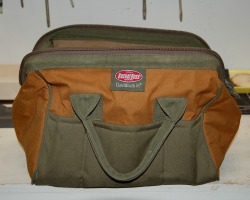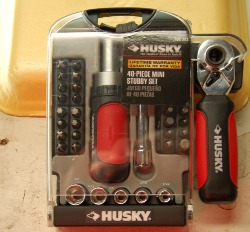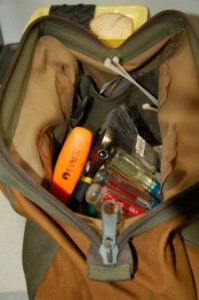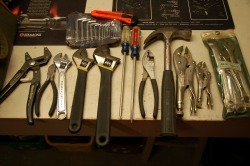I was lucky growing up as a kid in rural farmland country of Southeast Missouri. I was raised in a two business family. My  father ran a flying crop dusting business, owned several planes and lots of mechanical equipment. My mom ran her own auto parts store for 32 years. I became a pretty darn good parts counter “boy” in the day, too, when auto parts were looked up in a huge bank of catalogs not a computer. I was around aircraft engines, trucks, pumps, fuel systems, all manner of working on things from lawn mowers to radial Pratt & Whitney 600 horsepower engines and the ole V6s in the two GMC trucks we had.
father ran a flying crop dusting business, owned several planes and lots of mechanical equipment. My mom ran her own auto parts store for 32 years. I became a pretty darn good parts counter “boy” in the day, too, when auto parts were looked up in a huge bank of catalogs not a computer. I was around aircraft engines, trucks, pumps, fuel systems, all manner of working on things from lawn mowers to radial Pratt & Whitney 600 horsepower engines and the ole V6s in the two GMC trucks we had.
By Dr. John J. Woods, a contributing author to SHTFBlog & Survival Cache
In the parts store I sold everything from mufflers on Cadillac’s to overhaul kits for the 427 Chevrolet weekend race track drivers. I learned a lot of common sense and a lot of how mechanical things worked. That experience put me in good stead for life.
Build a Bug In Tool Box
If you are limited in your mechanical skills to even fix simple things yourself, then I encourage you to take a home repair or  auto repair course at the local community college. Whatever you do, you will need tools. Those of us that tinker never seem to get enough of them. Once you acquire some basic skills and a good set of tools, you should quickly learn the payback it will earn you at home being able to fix many things yourself. Home ownership alone will test all the skills you have from basic carpentry, electricity, plumbing, and everyday repair or adjustment of mechanical systems in the home. If you have lawn equipment, you can work on that, too. It all adds up. But you need tools.
auto repair course at the local community college. Whatever you do, you will need tools. Those of us that tinker never seem to get enough of them. Once you acquire some basic skills and a good set of tools, you should quickly learn the payback it will earn you at home being able to fix many things yourself. Home ownership alone will test all the skills you have from basic carpentry, electricity, plumbing, and everyday repair or adjustment of mechanical systems in the home. If you have lawn equipment, you can work on that, too. It all adds up. But you need tools.
When I graduated from high school in 1968 my mom presented me with a large carry tool box. Upon opening it, I discovered it was empty, but a great box that I still have by the way. The real prize was that I could go around the auto parts store and fill my new box with anything I could get into it.
Also Read: 10 Basic Tools For Your Rifle
In those days S&K Wayne Tools were the best mechanic hand tools on the market. I had a field day filling the box. I picked out  a dozen screwdrivers, Phillips, and straight edge, three socket sets, ½, 3/8 and ¼-inch drives and some metric sockets, too. I got a set of open end/box end wrenches up to ¾-inch. I took several pairs of pliers, Vise-Grips, and a set of Allen wrenches. I added a good hammer, rubber mallet, and a couple adjustable wrenches. That got me off to a pretty good start. Thanks Mom.
a dozen screwdrivers, Phillips, and straight edge, three socket sets, ½, 3/8 and ¼-inch drives and some metric sockets, too. I got a set of open end/box end wrenches up to ¾-inch. I took several pairs of pliers, Vise-Grips, and a set of Allen wrenches. I added a good hammer, rubber mallet, and a couple adjustable wrenches. That got me off to a pretty good start. Thanks Mom.
I detailed this list to give you a general idea of the kinds of basic working hand tools you should have on hand. This list can initiate the creation of your Bug In Tool Box. One you can use often, rely upon and not have to worry about moving around. You can add to the list as needed and expand your tool box as an on-going project.
Years later, I bought a set of larger standing tool boxes, a lower unit on wheels with a larger box with drawers on top. After 47 years since high school graduation, I have added quite a few new tools, gadgets, and specialty tools as well. I won’t detail those because you need to build your own tool set based on your general use needs. Remember though this home based tool accumulation is for the Bug In scenario and these tools remain at home. What we all need in addition to this ultimate selection of tools and stuff is a bag of tools to grab or even keep in the primary escape vehicle in case of a SHTF.
The Minimalist Tool Set Up
Now, here comes the hard part. If you choose to execute a Bug Out prep plan during a SHTF or other event, and part of that  gear list includes a tool box or bag of some kind, then what do you put into it? Of course, size and especially weight will be a major consideration. I offer up my design and contents as a list of suggestions. Please contribute your thoughts, alternatives, and ideas following my article. That way we can all learn better prepping from each other as a sort of collective SHTF team. I still have the first tool box my mom got me, but it is metal, fixed in dimensions and rigid with a hinge top and latch over lock up. There is a lift out tray in the top. It is hard to pack so I use it in the garage as a back up tote to the yard kind of tool box.
gear list includes a tool box or bag of some kind, then what do you put into it? Of course, size and especially weight will be a major consideration. I offer up my design and contents as a list of suggestions. Please contribute your thoughts, alternatives, and ideas following my article. That way we can all learn better prepping from each other as a sort of collective SHTF team. I still have the first tool box my mom got me, but it is metal, fixed in dimensions and rigid with a hinge top and latch over lock up. There is a lift out tray in the top. It is hard to pack so I use it in the garage as a back up tote to the yard kind of tool box.
I have found that soft sided tool bags carry better, have lots of pockets and a good one will have a heavy duty zipper top to secure everything inside even if it gets turned upside down. Mine also has heavy duty cord carry handles that are easy and secure to grab in a rush. Outside pockets line both sides for small tools or other supplies. Inside there are two big end pockets and several on both sides of the bag wall. The “wide mouth” opening makes inside access easy. Tools that are too long may hang up.
Also Read: 7 Types Of Gear You Need For Your Bug Out Bag
The brand I happened to have found, liked and bought is the BucketBoss Gate Mouth Jr. At the time I bought this one over ten years ago they offered several sizes. I use their larger bag for a range bag. It is constructed of very heavy, stiff canvas and has worn very well in regular use. I am sure there are many other types like it, so shop around at Tractor Supply, Home Depot, Northern Tools, and quality hardware stores.
It’s What’s Inside That Counts
Now when I include on this minimal tool bag tool list and state screwdrivers or other categories of tools, I am not counting each  one. I usually buy Sears Craftsman’s tools in multiple tool sets when they go on sale. I have several of their screwdriver and wrench sets. These run from the tiny ones up to a super large hand screwdriver in both standard head types. These tool sets come in a plastic sleeve to keep them organized.
one. I usually buy Sears Craftsman’s tools in multiple tool sets when they go on sale. I have several of their screwdriver and wrench sets. These run from the tiny ones up to a super large hand screwdriver in both standard head types. These tool sets come in a plastic sleeve to keep them organized.
I have one comprehensive set of screwdrivers and wrenches in my Bug Out minimal bag. There are two sizes of Vise-Grips, three types of regular pliers including one needlenose, and two larger slip jaw pliers plus one RoboGrip pliers. There are two 10-inch adjustable wrenches and one 12-inch, a claw hammer, set of Allen wrenches, two slip out blade razor edge box knives, one D-cell flashlight, a roll of black electrical tape, a 25-foot tape measure, a pencil, black marker pen, assortment of pull lock ties, and a bag of mixed nails and screws of various types.
I do not currently have a saw of any type in the bag. I should probably fix that just in case of a dire emergency. At my prime Bug Out alternative location I have wood and metal saws available plus other tools stashed away so I don’t transport them back and forth. I carry this minimal tool bag every time I go to camp and other times when I think I just might need some tools.
So, that’s my SHTF Minimalist Tool Bag.
What else should I include? What is in your Bug Out tool bag? Is it manageable? What has worked and not? Hopefully if you do not yet have a minimal tool bag to take with you, then you can start building one.
All photos by Dr. John J. Woods





